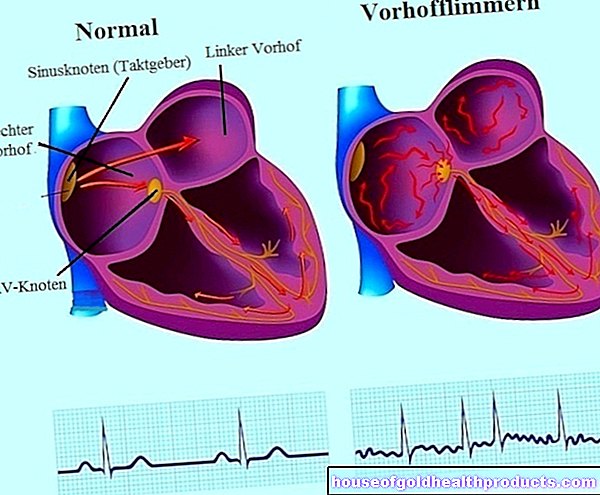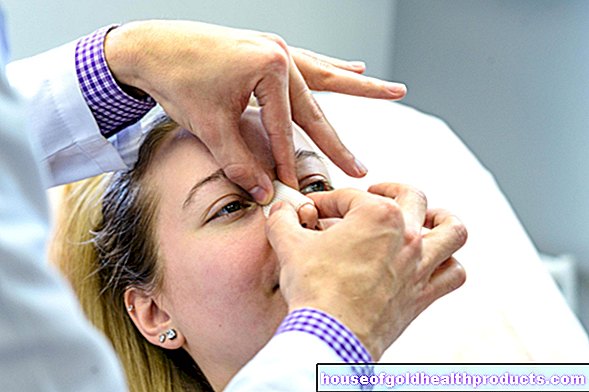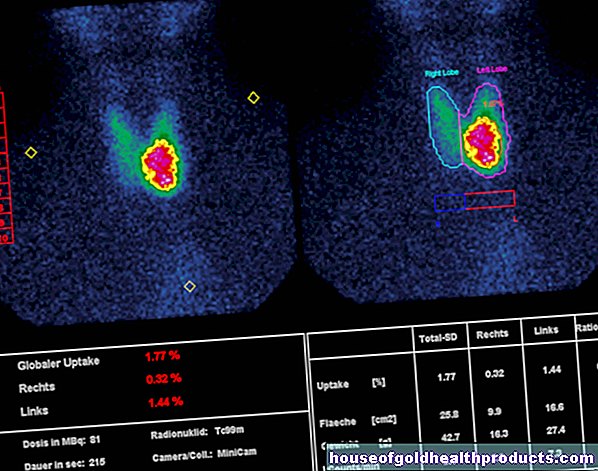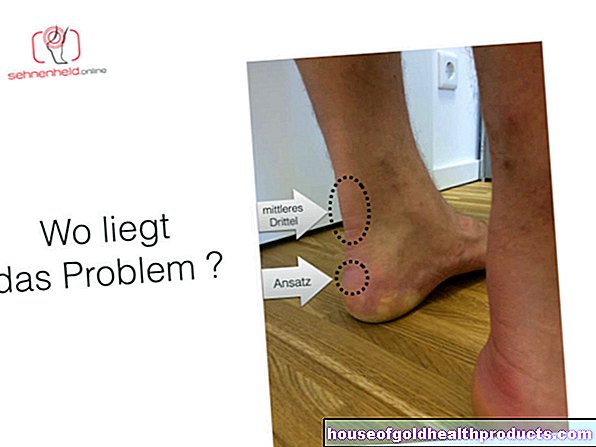Unreported numbers & Co: What does the Heinsberg study reveal?
Christiane Fux studied journalism and psychology in Hamburg. The experienced medical editor has been writing magazine articles, news and factual texts on all conceivable health topics since 2001. In addition to her work for, Christiane Fux is also active in prose. Her first crime novel was published in 2012, and she also writes, designs and publishes her own crime plays.
More posts by Christiane Fux All content is checked by medical journalists.The researchers of the much discussed “Heinsberg Study” have published written results for the first time. But what do the numbers on death rates and unreported numbers really mean - and to what extent are they transferable to the whole of Germany?
The region is considered to be the focal point of the outbreak in Germany: In the Heinsberg district in North Rhine-Westphalia, the novel coronavirus SARS-CoV-2 spread rapidly after a carnival session in February.
This is what makes the region so interesting when it comes to finding out more about the coronavirus: How does the chain of infection work in a mass outbreak? What are the death rate and the number of unreported cases? These are questions that researchers and politicians are currently preoccupied with. However, the results can only be transferred to the nationwide infection rate to a very limited extent.
How did the researchers proceed?
Scientists working with Prof. Hendrik Streeck from the University of Bonn asked more than 900 residents about symptoms and diagnoses in Gangelt, took and analyzed blood samples and throat swabs. The first results were presented in advance, and now they are also available in writing as a so-called preprint. Preprint means that specialist colleagues have not yet critically reviewed the study (peer review).
How many people got infected?
Previous studies had shown that many infected people develop no or only very mild symptoms and therefore fail the virus tests. Using blood samples, the team now determined how many people in Gangelt actually later had antibodies against the coronavirus in their blood, i.e. were infected with Sars-CoV-2: It was 15.5 percent - five times as many as officially reported as infected had been.
However, this cannot be applied to the whole of Germany. It only applies to a very limited area in which a large number of people fell ill very quickly.
The researchers also wrote to a total of 600 randomly selected households in Gangelt. Of these, 405 households with a total of 919 residents took part. Above all, those who suspected they might have been infected may have agreed to participate. That would skew the results.
Above all, in areas with fewer infections, the number of those who went through the disease unnoticed is likely to be correspondingly lower. For the overall German average, scientists estimate a rate of 1 to 2 percent. For a so-called herd immunity that stops the outbreak, however, 60 to 70 percent would be necessary.
How many people die?
However, based on the Gangelter group, it is possible to deduce more precisely than usual how high the proportion of those infected there actually was. Experts are currently based on the number of reported infected people - i.e. do not include the undiscovered cases (case mortality).
In Gangelt, where these were recorded, the infection mortality was 0.37 percent. It is thus in the range of the mortality rate estimated so far. But even this number cannot easily be transferred to the whole of Germany. On the one hand, because it is based on only seven deceased. One death more or less would have shifted the percentage considerably.
On the other hand, because it can only be used for a similarly structured population - with regard to age and previous illnesses, for example. In Gangelt, too, the virus initially spread among active, not-too-old people.
In addition, fewer children but more people older than 65 were recorded in the study than is the case in the German population as a whole.
Residents of a retirement home, on the other hand, did not take part. But it is precisely these that are particularly relevant for the spread and death rate of Covid-19: In the meantime, more and more elderly people are falling ill in Germany. Residents of old people's homes in particular are dying of the disease, which is currently increasing the death rate across Germany.
How high is the number of unreported cases?
With their study, the researchers also want to determine the number of unreported cases more precisely. The idea: Instead of the uncertain number of reported infected people, which among other things depends on the number of tests carried out, it is derived from the number of SARS-CoV-2-related deaths, which is a more reliable figure.
Based on 6,700 deaths in Germany (as of May 3, 2020), the Heinsberg data would result in an extrapolated total of around 1.8 million infected people. This would mean that the number of unreported cases would be around a factor of 10 higher than the number of actually reported infected people. For the reasons mentioned above, however, this calculation must also be viewed with caution: Fewer or fewer deaths would lead to a significant shift in the data.
Are antibody tests meaningful?
Uncertainties regarding the antibody tests that were made in advance of the publication, however, hardly seem to falsify the result. The antibody tests reveal a previous Sars-CoV-2 infection. The criticism: Some of them also work against infections with other circulating coronaviruses.
According to the product information and reviews by another team of virologists from the Charité, it was found that the ELISA test used had a hit rate of around 98 to 99 percent.
This error rate is hardly significant in the Heinsberg study. In other regions, where there are proportionally much fewer Sars-CoV-2 infections, this is likely to be more problematic.
What the Heinsberg study really shows
What the Heinsberg study reveals about the routes and rates of infection remains interesting:
First: Men and women, old and children, pre-ill and healthy people were infected with similar levels of infection in the households examined. Apparently, these factors do not play a significant role in the risk of infection.
Second: a good 22 percent of those infected did not notice any symptoms. “Anyone who is supposedly healthy we come across can unknowingly carry the virus. We have to be aware of this and act accordingly, ”says Prof. Martin Exner, head of the Bonn Institute for Hygiene and Public Health and co-author of the study.
Third: A major event can actually play the supposed major role in an outbreak: the infection rate was particularly high among people who had attended the carnival session. They also noticed symptoms much more often than infected people who had been infected elsewhere; possibly because they had been exposed to particularly high doses of the virus.
"In order to find out whether the physical proximity to other meeting participants and the increased formation of droplets from loud speaking and singing have contributed to the disease progression, we are planning further investigations in cooperation with hygiene specialists," said co-author Prof. Gunther Hartmann, Head of the Institute for Clinical Chemistry and Clinical Pharmacology at the University Hospital Bonn.
Study leader Streeck himself draws the following conclusion: "The results can serve to further improve model calculations on the spread behavior of the virus - so far the data basis is comparatively uncertain." The conclusions that would be drawn from the study results depend on many factors that are beyond one go beyond scientific consideration: "The evaluation of the findings and the conclusions for concrete decisions are incumbent on society and politics."
Tags: baby toddler pregnancy birth alcohol












.jpg)
















